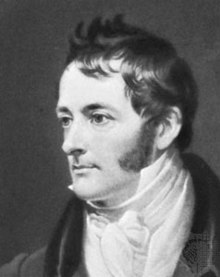Two friends of mine called me earlier with a question. One of them kegs his beers, and he had an odd problem: He can keep a sealed keg around for quite a while, but once he taps it, he only has about three days to finish it, or it will go bad. This happens consistently and regardless of the type of beer he kegs. I asked him what does it mean that the beer "goes bad", and he says that it becomes sweeter, heavier, and looses carbonation. I asked him to describe his process:
"I usually naturally carbonate my beer. That is, I put in the corn sugar the way I'd do with bottles, seal it, and put it a away for a bit. If I'm in a hurry I'd force carbonate. I'd put the keg on 30psi for a day and shake it, then 20, then 10. When it's carbonated I put it on tap at serving pressure of 6psi and serve it*."
"Well, there's you're problem" I responded. "In both methods in which you carbonate, you utilize higher pressure for carbonation than for serving. When you put beer on 6psi, the volume of gas dissolved in the beer will eventually equalize to the volume dissolved under that pressure, and the beer will become less carbonated"
Let me explain:
 |
| William Henry (source: wikipedia) |
"At a constant temperature, the amount of a given gas that dissolves in a given type and volume of liquid is directly proportional to the partial pressure of that gas in equilibrium with that liquid."
In laymen's terms this basically means that the more pressure of a gas you have over the liquid, the more of that gas will be dissolved inside the liquid and vice verse. Or to put it in even simpler terms: when you put beer under 20psi of CO2 it will be more carbonated (eventually) than beer that's under 10psi (at the same temperature). The two key phrases in that statement are "eventually" and "same temperature"
The easiest way to think about carbonation is to think of it as a finite amount of CO2 gas in a volume of beer. Think of beer before you carbonate it. It's completely "flat", but that doesn't mean it doesn't have any gas in it. Rather, it has an amount of gas in it proportional to the amount of gas outside it. Doesn't really matter how much gas that actually is, just that this is our "baseline" amount of gas, so we'll call that 1 volume of gas.
Now if we want the beer to be carbonated, we want the volume of gas IN the beer to be more that the volume of gas OUTSIDE of the beer. We'll talk about how to do that in a second, but first let's just define our goal here. We want an amount X of gas in the beer that is bigger than 1 volume as we described above. For purpose of discussion let's say we want 2 volumes of gas***. That is we want twice as much gas in the beer as it had if it were not carbonated at all. So how do we get it?
Well, remember what I said were the important parts of Henry's law? "Eventually" and "Temperature". As it turns out, if you put the beer under a given amount of pressure at a given temprature for a given amount of time, it will reach the carbonation level you want. How do you know what pressure and temprature? Well, there's formulas for that. Or you could just use this handy chart from http://www.kegerators.com/carbonation-table.php This chart gives you a handy reference to what pressure to put your beer under at what temperature to get the results you want.***
So why did my friend's beer "go bad" after three days? Well, it didn't. What happened was that when my friend carbonated his beer, he carbonated it to his desired carbonation level, about 2.4 volumes. He then put it in a refrigerator that's probably about 40F at 6psi. A quick glance at the handy chart shows that under those conditions the beer would only dissolve 1.92 volumes. This didn't happen immediately, but eventually (remember "eventually"?) the amount of gas dissolved in the beer dropped from 2.4 down to 1.92. At that carbonation level, the beer appeared flat, and (because carbonation effect perceived body and flavor) sweeter/heavier. Putting the beer under the correct pressure for the carbonation level would solve his problem, and let him enjoy his beer for a lot longer.
----------------------------------------------------------
* Actually, the man said he puts it on 6 bar, which rather amazed me. 1 bar is equal to 14.7 psi, and at 6 bar, he would have been exposing his beer to upwards of 88psi. considering that most corny kegs are only rated to 50psi, I felt that truly trying to use 6 bar would end up in quite a bang.
** People tend to be confused on this, and claim it's because of Boyle's law. It's not. It's Henry's law, which is a useful thing to know next time you hear some pompous putz give a lecture on keg carbonation ;)
*** This is not quite accurate. By convention, when we talk about carbonating beer we talk about ADDITIONAL volume. So in fact, when we carbonate something to 2 volumes it actually has THREE times the amount of gas. The original one volume, plus two volumes' worth of carbonation. This is why the chart has measurements below one, because you'd actually end up with just a little more than the volume of gas you already head.
No comments:
Post a Comment